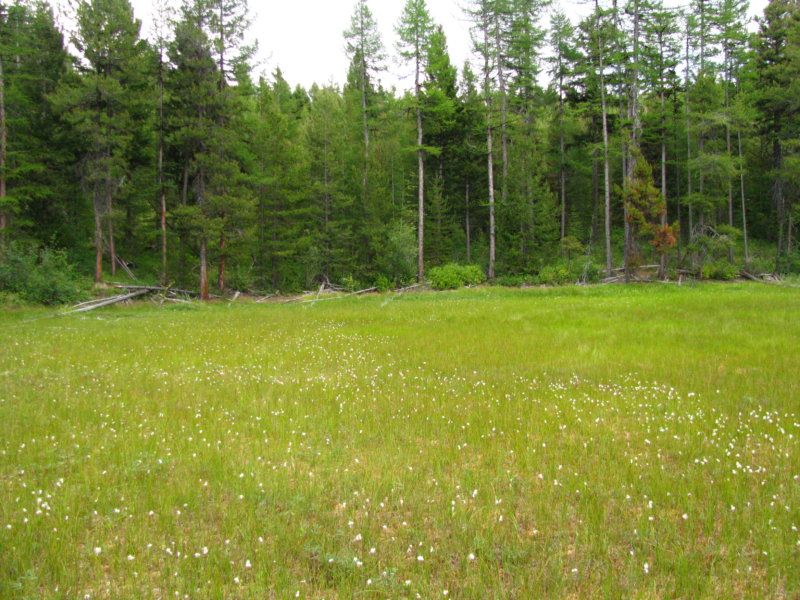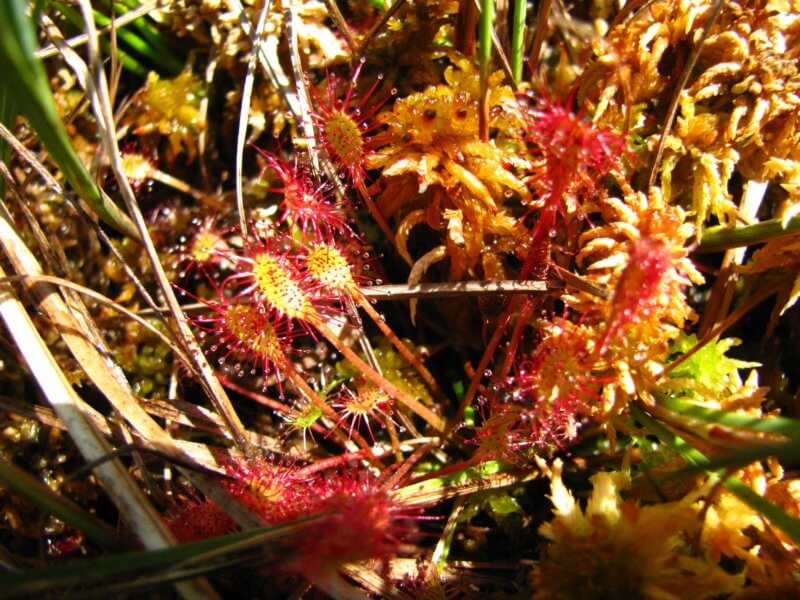Montana Fens
by Steve Shelly
Broadcast 11.12 and 11.15.2019

Fen in the Swan Valley. Photo by Allison De Jong.
Listen:
Even as the deep snowpack buries much of the landscape in Western Montana, there are some very special wetland habitats that will not freeze at all this winter. These wetlands, known as fens, are among the rarest habitats in the state.
Fens are formed under permanently water-saturated conditions, usually in association with springs that flow year-round. This permanent saturation leads to the accumulation of organic matter, or peat. In this sense, fens “create themselves” as the peat layers build up over time.
There are two types of peat-forming wetlands: fens and bogs. Fens are peatlands whose water sources include both precipitation and groundwater. Bogs, on the other hand, receive water only from precipitation that falls directly on their surfaces. True bogs do not occur in Montana; they are restricted to regions that have very moist climates even more conducive to the buildup of peat layers—such as the British Isles and the northern-most latitudes of North America. All peatlands in Montana are fens, and most of them are found west of the Continental Divide, especially in the Swan and Flathead River drainages.
Fens contribute substantially to the state’s biological diversity. Recent field studies have documented more than 180 plant species associated with fens in Montana—approximately 8% of the 2,900 vascular plants known to occur in the state. Fifteen of these plants are very rare, and their populations are monitored by the Montana Natural Heritage Program. Of special interest are three species of sundews. These are carnivorous plants that digest insects caught in the sticky glands covering their leaf surfaces. This supplemental nutrient source helps make up for the often nutrient-poor status of the waterlogged substrates to which they are confined. The northern lemming, a rare animal in the Rocky Mountains, is also confined to fens.
So: all wetlands in Montana are certainly not the same! If you are lucky enough to one day go exploring in a fen, keep in mind the rarity of these special places. There are not many cases where whole habitats “create themselves” by such intimate interactions between organisms and their physical environment.

Carnivorous sundews. Photo by Allison De Jong.
Every week since 1991, Field Notes has inquired about Montana’s natural history. Field Notes are written by naturalists, students, and listeners about the puzzle-tree bark, eagle talons, woolly aphids, and giant puffballs of Western, Central and Southwestern Montana and aired weekly on Montana Public Radio.
Click here to read and listen to more Field Notes. Field Notes is available as a podcast! Subscribe on iTunes, Google Play, or wherever you listen to podcasts.
Interested in writing a Field Note? Contact Allison De Jong, Field Notes editor, at adejong [at] montananaturalist [dot] org or 406.327.0405.
Want to learn more about our programs as well as fun natural history facts and seasonal phenology? Sign up for our e-newsletter! You can also become a member and get discounts on our programs as well as free reciprocal admission to 300+ science centers in North America!












